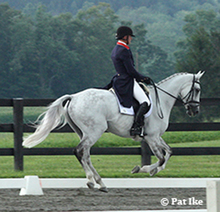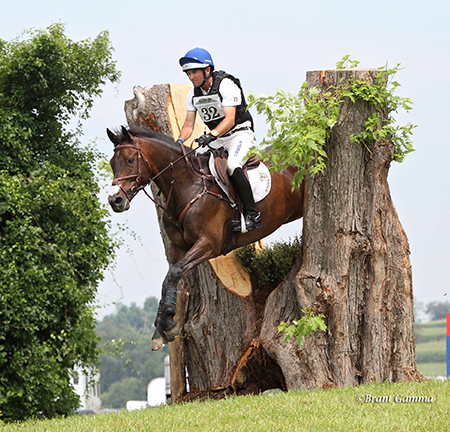The Sport of Eventing
ABOUT EVENTING
Millbrook Horse Trials is conducted under the auspices of the United States Eventing Association (USEA) and the United States Equestrian Federation (USEF). In a Horse Trials, the rider and horse, competing at the division level appropriate to their experience, must participate in three different phases: Dressage, Cross Country, and Stadium Jumping. Penalty points from each of these phases are totaled for a final standing. The lowest score wins the division.
|
DRESSAGE
Dressage is a French term meaning “training” and its purpose is to develop the horse’s natural athletic ability and willingness to work making him calm, supple and attentive to his rider. The dressage test is a series of compulsory movements performed on the flat in an arena. The performance must be fluid, balanced, and accurate, presenting an overall picture of grace and harmony. It reflects the cavalry officer’s need for an obedient, attractive mount on the parade ground. Getting a calm, submissive, and well-balanced test from an extremely fit and eager horse before its strenuous gallop cross country is a real achievement. Each movement of the dressage test is awarded from 0-10 good marks. The good marks earned (minus any error of course or test) are converted into a percentage of the maximum marks available. This percentage is subtracted from 100 to create the penalty score for the test. The resulting total is the score in penalty points for the test. |
|
CROSS COUNTRY
In this phase, considered the most demanding and exciting part of a Horse Trials, the horse and rider must gallop over natural terrain, negotiating at speed a variety of unfamiliar jumping obstacles. The horse does not know what is ahead, but must trust and unhesitatingly obey the rider, who has studied the course beforehand. Water, banks, ditches, drops and other features of natural terrain may be encountered, as well as man-made obstructions. Options of height and striding (distance between jumping efforts)further challenge the competitor’s skill and control. Cross Country proves the speed, endurance and jumping ability of the horse as well as the boldness and knowledge of the rider. It is the most important part of the entire competition and counts most in scoring. Time penalties are assessed, as well as penalties for refusals and falls at jumps and deviations from course. Cross Country Faults at Obstacles: 1st refusal, run-out or circle at obstacle - 20 penalties 2nd refusal, run-out or circle at same obstacle - 40 penalties 3rd refusal, run-out or circle at same obstacle - Elimination 3rd penalized disobedience on the entire course at Preliminary, Intermediate or Advanced - Elimination 4th refusal, run-out or circle on the X-Ctry Course at Beginner Novice, Novice or Training - Elimination Fall of horse - Mandatory retirement Fall of rider - Elimination Course error - Elimination |
|
|
STADIUM JUMPING
Stadium Jumping tests the horse’s obedience and athleticism over a timed course of fixtures which can be easily knocked down by a careless horse. The track of the course is irregular and winding, requiring control and handiness. Penalty points are assessed for knockdowns, refusals, falls, deviations from course, or for exceeding the time allowed. The object of the Stadium Jumping test is to prove that, after jumping solid obstacles at speed in the Cross Country, horses maintain the obedience to jump a course of obstacles cleanly at a controlled pace. Stadium Jumping Penalties: Knocking down an obstacle - 4 faults 1st refusal - 4 faults 2nd refusal: Adv, Inter, Prelim - Elimination 2nd refusal: Trng, Nov, Begin Nov - 8 faults 3rd refusal: Trng, Nov, Begin Nov - Elimination Off course - Elimination Fall of horse &/or rider - Elimination Exceeding time allowed - 1 point per second At the end of the Stadium Jumping, each completing competitor’s scores from Dressage, Cross Country, and Stadium are totaled, the horse and rider team with the lowest number of penalties is declared the winner. |




